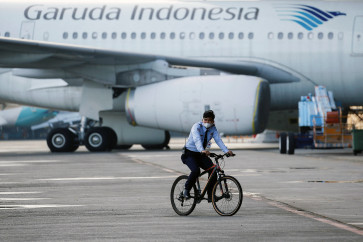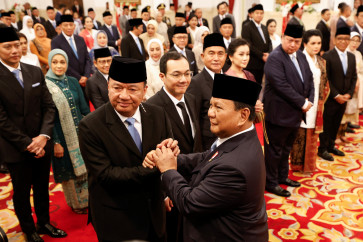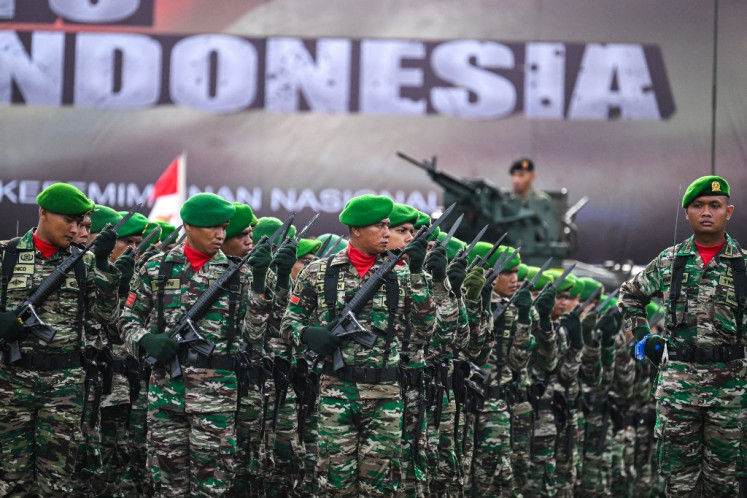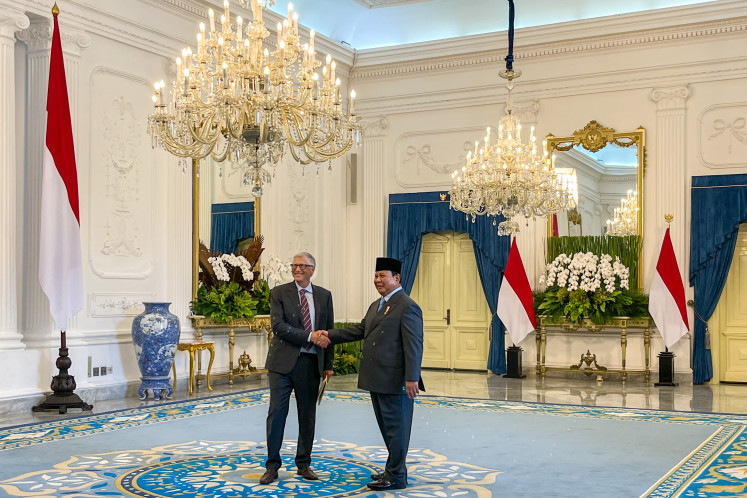Analysis: Near-term pressure from possible LRT loan means buy into weakness
Local news recently reported that the government would soon issue a presidential decree in regards to the development of the Rp 23 trillion (US$1
Change text size
Gift Premium Articles
to Anyone

L
ocal news recently reported that the government would soon issue a presidential decree in regards to the development of the Rp 23 trillion (US$1.73 billion) light rail transit (LRT) project in Jakarta.
The part of the news that resulted in a recent heavy sell-off by Indonesian banks on March 27 was when the government said that financing would be partially supported by a syndicated loan from state-owned banks at a 7 percent interest rate, versus a normal rate of 9 to 11 percent.
On that day, the Indonesia Stock Exchange’s finance index (still called the JAKFIN index from when the bourse was known as the Jakarta Stock Exchange) was down 1.3 percent versus the Jakarta Composite Index at minus 0.5 percent, led by Bank Negara Indonesia (BBNI) with minus 4 percent, Bank Rakyat Indonesia (BBRI) with minus 3 percent and Bank Mandiri (BMRI) with minus 2 percent.
The market seemed concerned that this would be another intervention that could squeeze the net interest margin (NIM) or the profitability of the state banks.
We spoke with the three state banks (BBNI, BMRI and BBRI) that had previously declared commitments to finance the LRT project.
They said that nothing had been signed or confirmed yet in regards to the “7 percent interest rate” mentioned.
Note that the corporate yields for infrastructure projects are currently between 9 percent and 11 percent (for example, 9.25 percent for the LRT Palembang project). The terms of the loan, including the interest rate, are still under discussion.
The banks reiterated their initial principle that “they will only take commercially viable projects”.
Also discussed were compensation, like current account and savings account (CASA) commitments, additional fee-based income, or an extended government guarantee, to ensure that the banks’ profitability would be maintained in the event that they needed to lower their lending rates.
Note that there is no official Indonesian regulation that compels state banks to participate in government projects.
Jakarta is among the busiest cities in Southeast Asia, with more than 12 million residents, and is infamous for its traffic jams.
One of President Joko “Jokowi” Widodo’s commitments was to improve transportation infrastructure. The development of LRT was one of his signature projects, in our view.
It is perceived as a “must go” project, with the possibility of asking players from different fields to participate and contribute.
The current draft scheme is for the three state banks to lead the syndicated loan amounting to
Rp 18 trillion (part of the Rp 23 trillion in total funding needed), with the remaining Rp 5 trillion to be funded by an equity injection from state-owned contractor PT Adhi Karya (ADHI IJ) and train operator PT Kereta Api Indonesia.
We believe that it is crucial for the government to maintain equality and balance between preparing for the funding needs and “not intervening” with publicly listed state companies with a “forced” participation message that can hurt their profitability and create negative investor sentiment.
A bit of flashback: The Indonesian banking sector was badly hit by the news of the Financial Services Authority (OJK) potentially capping lending rates to single digits in the first quarter of 2016.
While the intention from the government was good for citizens and businesses (cheaper borrowing costs to boost spending), the message was received poorly by the market.
At that time, investors were under the impression that a fixed cap would be put on net interest margin (NIM) to prevent banks from earning “excess margins” and to give profits back to consumers.
We believe that the recent news of an infrastructure project interest rate cap is of a similar nature to the NIM cap back in the first quarter of 2016.
We would like to highlight that, at that time, the government actually managed to find a good solution to reduce the overall lending rate last year without forcing its hand or hurting the banks’ margins.
The government changed the interest rate benchmark from the Bank Indonesia (BI) rate to the lower seven-day reverse-repo rate in August 2016. The transition was actually smooth and the lending rate eventually came down.
We also believe that the government will find a way this time and find a win-win solution to provide funding for the government projects, while at the same time not intervening in the profitability of state banks.
Bank Central Asia (BBCA) and non-state banks could outperform them in the near term.
We think the current noise about the infrastructure loan rate cap (circa 7 percent) is mostly negative for the state banks that have big exposure to infrastructure projects (mainly BBNI and BMRI and to some extent BBRI).
Until the government can provide better clarity, we believe that private banks like BBCA, Bank CIMB Niaga (BNGA), Bank Pan Indonesia (PNBN) and Bank Danamon (BDMN) can outperform them in the near term.
Our 12-month view on Indonesian banks remains intact.
We continue to be “Overweight” on the sector as we expect loan growth to pick up and asset quality (non-performing loans) to improve on a commodity-driven gross domestic product growth recovery.
Potential upgrade from S&P Global Ratings on Indonesia in mid-2017 would be an additional catalyst.
We advocate buying into weakness. BBNI (infrastructure exposure) and BBCA (consumer exposure) remain our top picks.
_____________________
The writer is a senior research analyst at PT Bahana Sekuritas.









